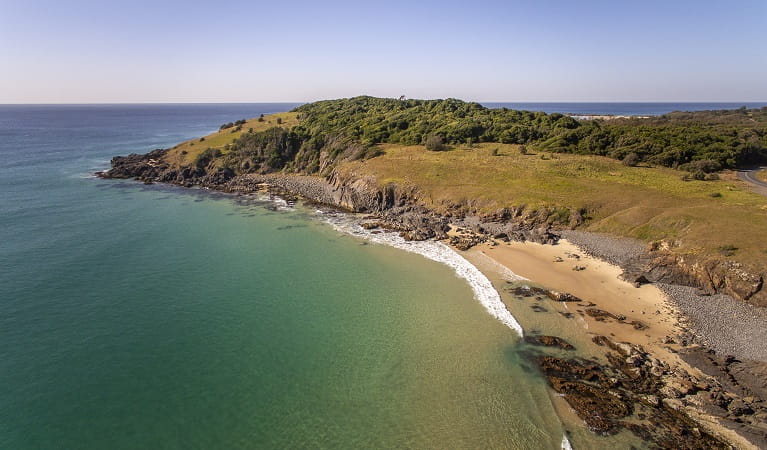Goolawah National Park
Overview
For beach camping near Kempsey and Crescent Head, head to Goolawah National Park. You can go surfing, fishing, birdwatching and even whale watching from the headlands.
Read more about Goolawah National Park
Come and be captivated by the uncrowded beaches and pristine headlands of Goolawah National Park, near Kempsey on the NSW North Coast. Roaming through these coastal surroundings, you can’t help feeling you’ve landed in a place untouched by time.
Comprising a narrow strip of mostly beachfront land, the park runs south from the outskirts of Crescent Head village to Racecourse Headland, where it links with Goolawah Regional Park.
Here, biological diversity combines with significant Aboriginal heritage. The beaches are secluded and pure, bounded by exquisite native plant life rather than carparks or cafes. A left-hand point break beckons to surfers, while spectacular rocky shores, reefs and a lagoon provide the ideal setting for snorkelling or swimming. Go birdwatching or whale watching, spot dolphins and turtles, or scan the bush for koalas or dingoes.
To really connect with nature, nothing compares with a night or two in the great outdoors. Head to Racecourse campground, or nearby Delicate campground in Goolawah Regional Park, for that low-key beach camping experience, followed by a beach walk, a spot of fishing, or an unforgettable moment spent watching the sun rise over this tranquil place of beauty.
Local alerts
For the latest updates on fires, closures and other alerts in this area, see https://www.nationalparks.nsw.gov.au/visit-a-park/parks/goolawah-national-park/local-alerts
Contact
- in the North Coast region
Goolawah National Park is always open but may have to close at times due to poor weather or fire danger.
-
-
Kempsey office
02 6561 6700
Contact hours: Monday to Friday, 9am to 4.30pm. - 247 Old Station Rd, Verges Creek NSW 2440
-
Email: npws.hastingsmacleay@environment.nsw.gov.au
-
Kempsey office
Visitor info
All the practical information you need to know about Goolawah National Park.
Map
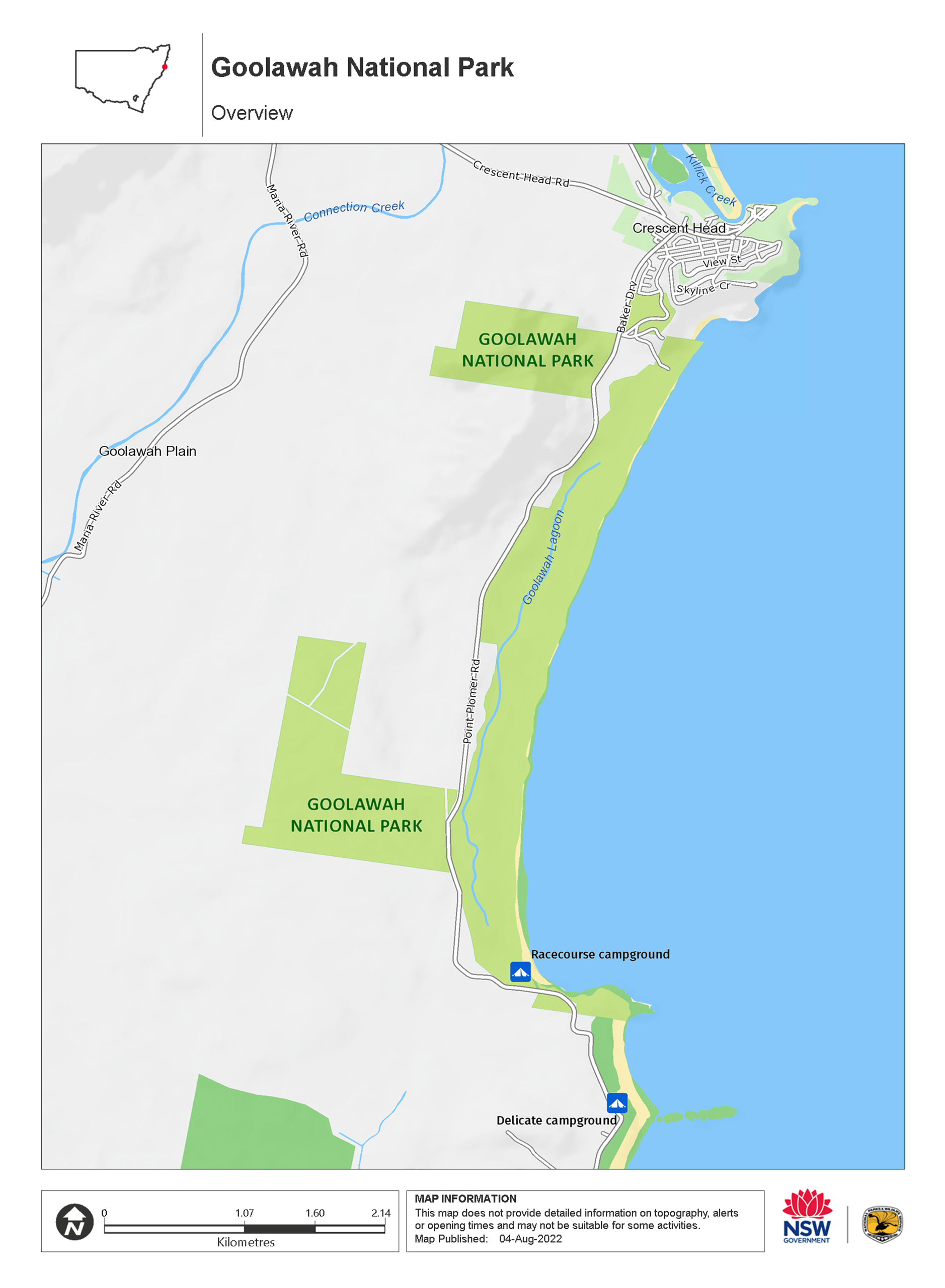
Map legend

Getting there and parking
Get driving directions
From Kempsey:
- Take Crescent Head Road from South Kempsey
- Just after entering the village of Crescent Head, take the prominent right turn on Point Plomer Road.
- You’ll find the entrance to Goolawah National Park about 1km along Point Plomer Road
By bike
Check out the Bicycle information for NSW website for more information.
By public transport
For information about public transport options, visit the NSW country transport info website
Best times to visit
There are lots of great things waiting for you in Goolawah National Park. Here are some of the highlights.
Autumn
This is a great time to go beachcombing, feel the sand between your toes on a beach walk, and breathe in the salty sea air. The water is still quite warm in autumn, too, so a swim is certainly not out of the question.
Spring
Roam through the park in spring to go birdwatching and see the coastal heathlands bursting with wildflowers. The colourful banksias and bottlebrush will catch your eye instantly.
Summer
Bring your towel and bathers and hit the Crescent Head beaches. You'll find Goolawah Beach a great spot for swimming, surfing and snorkeling.
Winter
Winter is the time for whale watching. Climb to the headland to spot whales on their annual migration. Plan a winter trip if you prefer a quieter camping experience. Campgrounds are less crowded at this time of year.
Weather, temperature and rainfall
Summer temperature
Average
19°C and 26°C
Highest recorded
42.3°C
Winter temperature
Average
7°C and 19°C
Lowest recorded
0°C
Rainfall
Wettest month
February and March
Driest month
August and September
The area’s highest recorded rainfall in one day
298.2mm
Facilities
Toilets
Maps and downloads
Prohibited
Pets
Pets and domestic animals (other than certified assistance animals) are not permitted. Find out which regional parks allow dog walking and see the pets in parks policy for more information.
Smoking
NSW national parks are no smoking areas.
Nearby towns
Crescent Head (9 km)
Crescent Head on the NSW North Coast is surrounded by some of the stunning natural environments in the State. As well as long stretches of coastline with fabulous beaches, there is a string on coastal national parks to explore. Go surfing, fishing, boating and bushwalking, enjoy bird watching or whale watching, spot dolphins, turtles and even koalas in the wild.
Kempsey (29 km)
Kempsey is a historic river town close to national parks and majestic beaches. Kempsey is a convenient place for an overnight stop for anyone driving between Sydney and the North Coast.
Port Macquarie (73 km)
Vibrant Port Macquarie is surrounded by beautiful waterways - the Hastings River, canals, creeks, bays and the Pacific Ocean. The city also has a five-star collection of golden-sand beaches stretching from Port Macquarie Beach to Town Beach and north along the 16-km swathe of North Beach.
Learn more
Goolawah National Park is a special place. Here are just some of the reasons why:
Surf's up
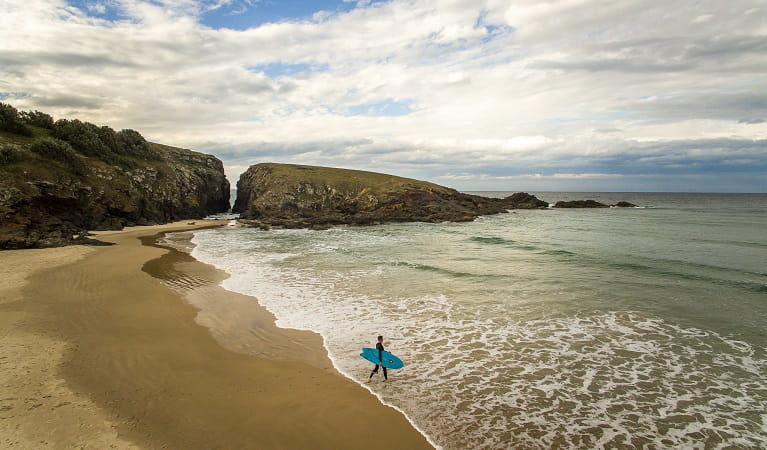
Head to the relaxed Goolawah beach to stroll on the sand or go bushwalking, bird watching, swimming or try your luck fishing. Plus, be sure to bring your board - many people regard this part of Australia as home to the country's best surfing. Beachcombing is also popular here - take a bag to collect ocean debris and litter as you walk. Not only will you revitalise your connection with nature, you'll be helping keep our beaches and oceans clean and safe for marine life. At the core of your Goolawah experience is the deep sense of discovery, respect and calm that results from spending time in such unspoiled surroundings. Camp for a few days and be the first to add your footprints to the sand in the mornings. Hear nothing but birds and crashing waves, and gather around a campfire, disconnected from duties, demands and devices. You can even share this incredible experience with your best friend in neighbouring Goolawah Regional Park. The Regional Park's 'Delicate campground' is one of the few northern NSW campgrounds you can bring your dog to, but keep in mind some mandatory restrictions do apply.
Protected plant life
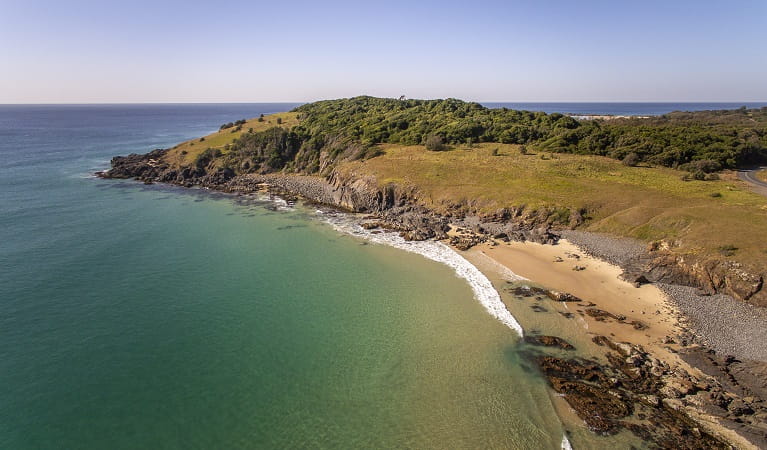
Native plant life enthusiasts will delight in a visit to Goolawah, home of a range of coastal vegetation communities. See if you can spot endangered Themeda grasslands and littoral rainforest on the windswept headlands, and be sure to keep to the tracks in these fragile environments. In autumn and winter, many trees burst into flower, including broad-leaved paperbarks, coast banksias and swamp mahoganies. Not only are these amazing to behold, they're also vital food sources for wildlife, including the endangered swift parrot.
- Surf and stay at Crescent Head Stay across from a beautiful surf beach at Waves Campground and spend your days learning to surf, near the popular surf town of Crescent Head.
Fighting to preserve culture
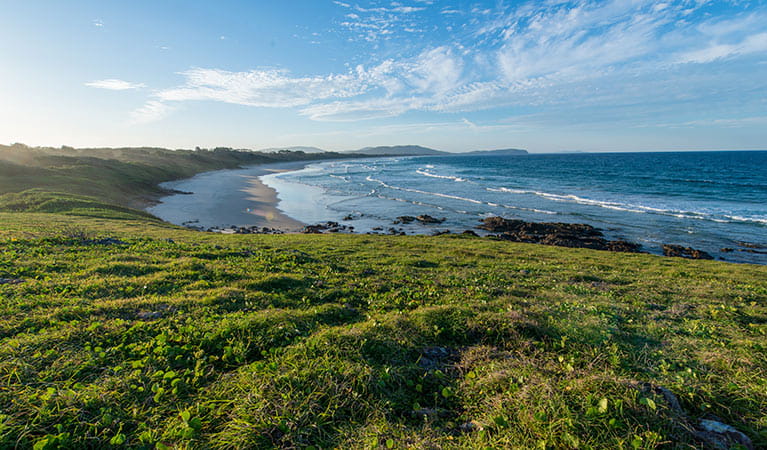
Goolawah is an Aboriginal word meaning 'yesterday'. Rich in edible resources, the area is highly significant to the local Dunghutti Aboriginal People, who still nurture a close connection with this land, and often camp here to maintain their culture. Locals are passionate about this area, and continue campaigning to limit its development. As you enter the park via Point Plomer Road, an unsealed road once used for sand mining, bear in mind the community's fight to keep this old 'back road' - and its surrounding landscape - natural, rustic and truly reminiscent of yesterday.
All creatures great and small
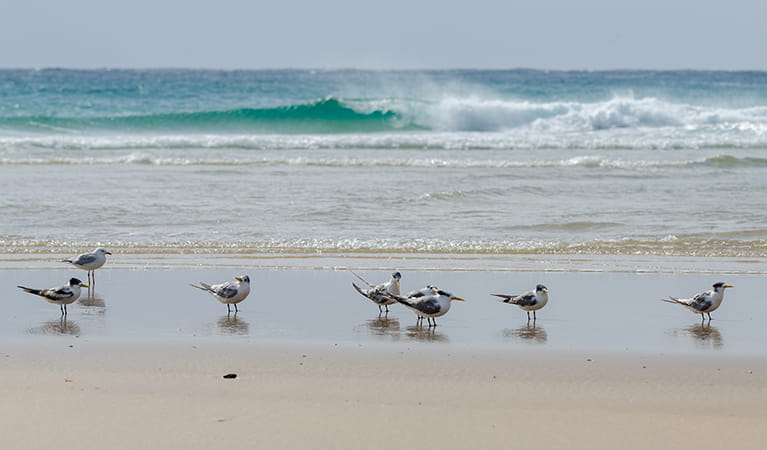
A visit to Goolawah National Park is like stepping into an amazing nature documentary. Come to see a huge variety of birds and animals, from ospreys and tawny frogmouths, to goannas and bandicoots, to dolphins and turtles. Go whale watching in winter, or head to the park's north to spot koalas in the tall eucalypts. Bird watching enthusiasts can see beach raptors, shore birds, parrots and honeyeaters. Plus, Goolawah is an important area for dingo conservation; so keep your eyes peeled, particularly at the campgrounds.
Education resources (1)
What we're doing
Goolawah National Park has management strategies in place to protect and conserve the values of this park. Visit the OEH website for detailed park and fire management documents.

